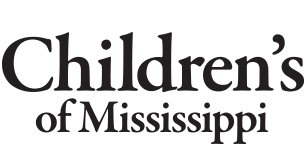Patient/Family Resources
- Children’s Plastic and Reconstructive Surgery Home
- Children's Craniofacial Services
-
Conditions and Treatments
- Conditions We Treat
-
More Information
- Ear deformities: microtia, anotia and constricted ear
- Cleft Lip and Palate
- Congenital nevus
- Craniosynostosis
- Dermoid cyst
- Nose deformities, nasal breathing problems
- Orbital hypertelorism
- Pierre Robin Sequence/Syndrome
- Positional Plagiocephaly: Flat Head Syndrome
- Prominent ears
- Velopharyngeal dysfunction
- Frequently Asked Questions
- Meet Our Team
- Patient/Family Resources
- Visit Preparation
Craniosynostosis Repair Home Care Instructions
Craniosynostosis occurs when one or more of the sutures (growth seams) in a baby’s head close too early. Early closure can cause the skull to grow in unusual shapes depending on which suture is affected. Early closure can also restrict brain growth and cause vision problems.
Craniosynostosis is usually noticed by the parents or pediatrician and is confirmed by a CT scan. These scans use low dose radiation and may require your child to have sedation.
Surgery is the treatment for craniosynostosis. There are several types of surgery to treat this condition:
- minimally invasive treatment
- cranial distractors
- cranial vault remodeling
The type of surgery will depend on the type of suture closure and the child’s age.
Minimally invasive procedures are typically done up to about four months of age using a very small incision. These methods may require the use of a molding helmet. If springs are utilized, a second surgery about three months later to remove the springs is needed.
Cranial distractors are recommended when maximal increase in space for the brain is required. This is usually due to multiple growth seams being closed. The surgery involves placement of cranial distractors that are then slowly turned for a period of several weeks to maximize the space for the growing brain. A second surgery is required to remove the distractors.
The cranial vault surgery involves remodeling certain areas of the skull to correct skull shape and to increase the amount of room for the growing brain. This is done at around 12 months of age and uses absorbable plates and screws.
Cranial vault post op instructions
Diet
- Your child’s regular home diet is OK.
- Make sure your child is getting a normal amount of daily liquids to prevent dehydration. If you notice your child is drinking less or having fewer wet diapers, please notify the plastic surgery team right away.
Wound care
- Apply bacitracin ointment to the scalp incision twice daily for 10 days after the initial dressing is removed. After 10 days, ointment is no longer needed for the incision.
- Keep the site where the drain was removed covered with gauze for two days. A small amount of clear, red or brown drainage is normal for the first couple of days. After that, drainage should stop, and a gauze dressing is no longer needed.
- Every day, clean around the scalp incision with baby shampoo. Do not scrub the area. Instead, wipe it gently and pat it dry.
- It’s OK to let soap and water run over the incision, but do not submerge your child’s head under water.
Activity
- No gym, contact sports, or swimming for three weeks.
Medication
- Take over the counter Tylenol® or Motrin® as needed for pain. (OK to use Motrin for children older than 6 months.)
- You will also be given a small amount of narcotic pain medication for any pain not controlled by Tylenol or Motrin. Use this sparingly.
Follow up
- Follow up with your surgeon in the Sanderson Tower clinic as scheduled at discharge. This is usually two to three weeks after surgery.
- Call (601) 984-5180 with any questions or concerns.
- If your child develops increased pain or swelling, redness or drainage around the incisions, fever or chills, an inability to eat or drink, or other worrisome symptoms, please notify the plastic surgery team right away.
Cranial distraction post op instructions
Diet
- Your child’s regular home diet is OK.
- Make sure your child is getting a normal amount of daily liquids to prevent dehydration. If you notice your child is drinking less or having fewer wet diapers, please notify the plastic surgery team right away.
Wound care
- Apply bacitracin ointment to the scalp incision twice daily for 10 days after the initial dressing is removed. After 10 days, ointment is no longer needed for the incision.
- Keep the site where the drain was removed covered with gauze for two days. A small amount of clear, red or brown drainage is normal for the first couple of days. After that, drainage should stop, and a gauze dressing is no longer needed.
- Once a day, clean the pin sites with hydrogen peroxide and wrap it with Xeroform®.
- Every day, clean around the scalp incision with baby shampoo. Do not scrub the area. Instead, wipe it gently and pat it dry.
- It’s OK to let soap and water run over the incision, but do not submerge your child’s head under water.
Activity
- No gym, contact sports, or swimming for three weeks.
Medication
- Take over the counter Tylenol® or Motrin® as needed for pain. (OK to use Motrin for children older than 6 months.)
- You will also be given a small amount of narcotic pain medication for any pain not controlled by Tylenol or Motrin. Use this sparingly.
Follow up
- Follow up with your surgeon in the Sanderson Tower clinic. This surgery requires weekly follow up with x-rays.
- Call (601) 984-5180 with any questions or concerns.
- If your child develops increased pain or swelling, redness or drainage around the incisions, fever or chills, an inability to eat or drink, or other worrisome symptoms, please notify the plastic surgery team right away.
Minimally invasive discharge post op instructions
Diet
- Your child’s regular home diet is OK.
- Make sure your child is getting a normal amount of daily liquids to prevent dehydration. If you notice your child is drinking less or having fewer wet diapers, please notify the plastic surgery team right away.
Wound care
- Apply bacitracin ointment to the scalp incision twice daily for 10 days after the initial dressing is removed. After 10 days, ointment is no longer needed for the incision.
- Keep the site where the drain was removed covered with gauze for two days. A small amount of clear, red or brown drainage is normal for the first couple of days. After that, drainage should stop, and a gauze dressing is no longer needed.
- Every day, clean around the scalp incision with baby shampoo. Do not scrub the area. Instead, wipe it gently and pat it dry.
- It’s OK to let soap and water run over the incision, but do not submerge your child’s head under water.
Activity
- No gym, contact sports, or swimming for three weeks.
Medication
- Take over the counter Tylenol® or Motrin® as needed for pain. (OK to use Motrin for children older than 6 months.)
- You will also be given a small amount of narcotic pain medication for any pain not controlled by Tylenol or Motrin. Use this sparingly.
Follow up
- Follow up with your surgeon in the Sanderson Tower clinic. This is usually two to three weeks after surgery.
- Call (601) 984-5180 with any questions or concerns.
- If your child develops increased pain or swelling, redness or drainage around the incisions, fever or chills, an inability to eat or drink, or other worrisome symptoms, please notify the plastic surgery team right away.
Back to Children's Plastic and Reconstructive Surgery Patient/Family Information



 UMMC
UMMC